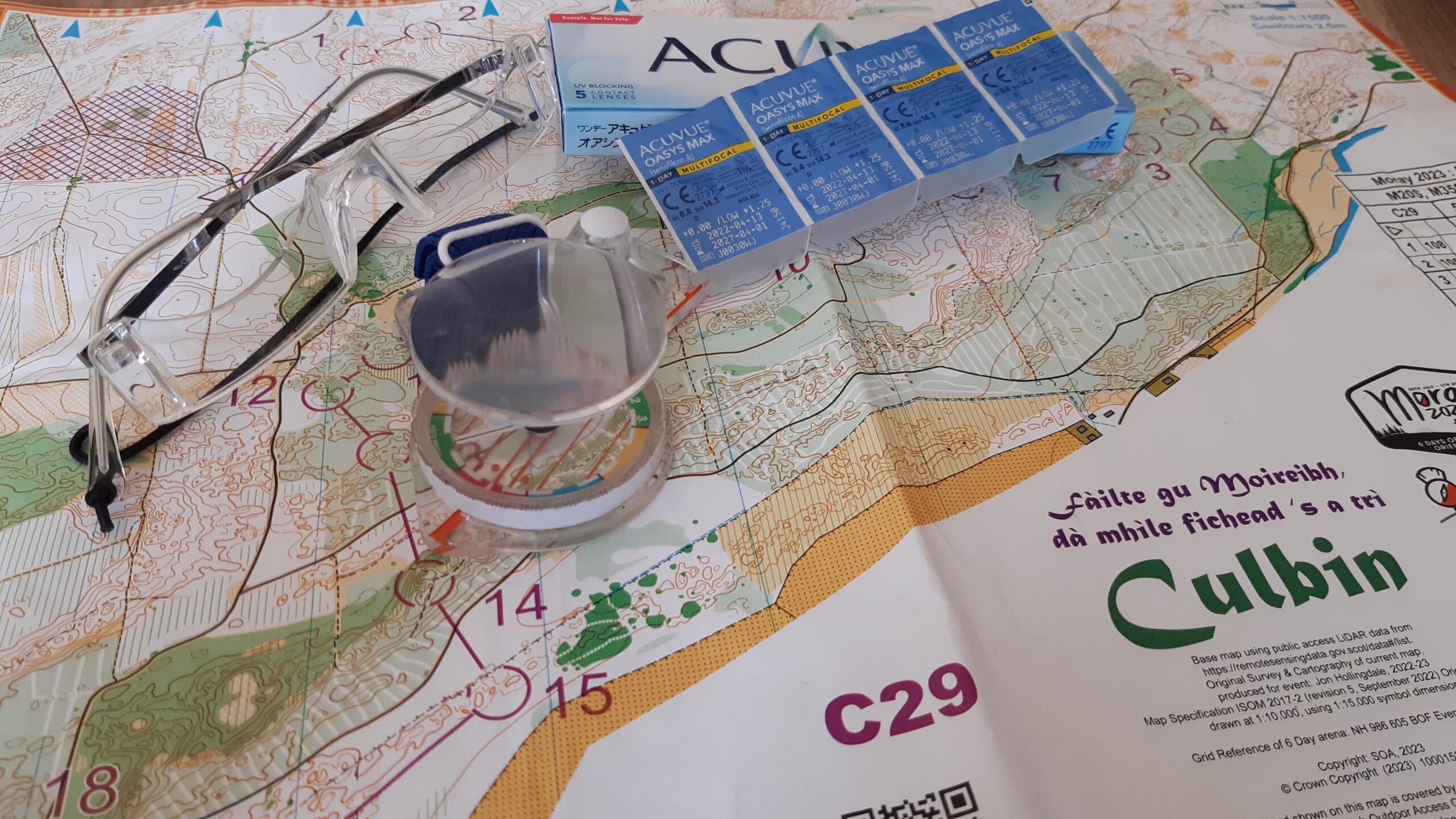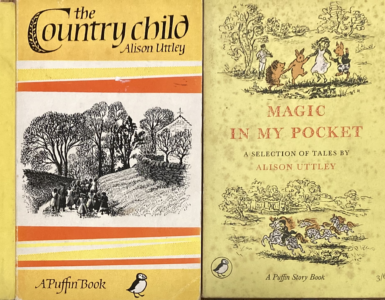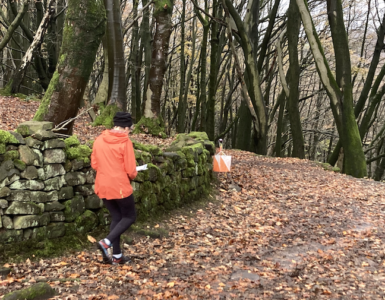Why does vision decline with age? Some suggestions and a survey
I’m looking for orienteers aged 40 years or more to complete a research survey on the vision corrections that they use when orienteering. If you’re reading this then you are very likely an orienteer, so if you are 40 years old or more I would really appreciate it if you could spend 5–15 mins completing the survey at https://tinyurl.com/ycxet6hr!
So what’s this all about, and why am I interested in people over 40 (with apologies for using the word ‘older’ in the title!)? Well, orienteering is an unusual sport in that it requires both clear distance vision to navigate the terrain, and clear near vision to read the map.
For the vast majority of people under 40, if you need glasses or contact lenses then the same correction can be used at all distances. To make an adjustment between looking at things at distance and near, the lens within the eye changes its shape and automatically changes your focus, a process that is called accommodation.
However, the ability of the lens to accommodate reduces over time. The lens constantly grows throughout life – new fibres are always being made at the edge of the lens, which pushes existing fibres into the centre of the lens and makes it denser and less flexible. This means that the amount of accommodation that the lens can produce starts to reduce from the age of about 20: while a teenager might be able to focus on a book held 10cm from their face, the closest that a 30 year old might be able to focus could be 20cm, and perhaps 40cm for a 40 year old. So while the change in accommodation ability is gradual, it is generally around the age of 40 that it starts to interfere with routine tasks, at which point the natural loss of focussing ability is called presbyopia.
Once someone reaches presbyopic age, there are a number of options. The first thing that most people do is hold close work a bit further away, which reduces the demand on accommodation. Once your arms are no longer long enough, common approaches are to get reading glasses if you don’t need a distance correction, or to opt for bifocal or varifocal glasses or contact lenses that can correct both distance and near vision in the same lens. Initially the reading lenses supplement your own accommodation, but over a period of 10 years or so the reading correction will increase until the lens is doing all the work and your own eye does very little. At this point, the correction tends to stabilise – you don’t carry on needing stronger reading glasses forever!
So, I’m interested in how presbyopic orienteers provide themselves with clear vision when it is very likely that optimum vision would be provided by different lens corrections at distance and near. This might sound a bit niche but a high proportion of orienteers are in the presbyopic age range, with 77% of adult UK orienteers with BOF ranking points being 40 or older (3809 people; https://www.britishorienteering.org.uk/rankings).
My motivation for this survey came about when I was manning the start at the WAOC 50th anniversary colour coded event at Maulden Woods in January 2023. People were coming through the start using a really wide variety of solutions including various different types of glasses, magnifiers, and probably different contact lens options as well. This intrigued me and provided a happy intersection between the sport I enjoy, and my day job as Professor of Optometry at Anglia Ruskin University (ARU) where sports vision is one of my interests. What I’m hoping to achieve with this survey is to understand which vision correction options are most popular. None will be perfect, or perfect for everyone, so I also hope to find out what the strengths and limitations of different correction options are, as well as find out what unusual options might have been adopted given that orienteers tend to be an innovative bunch!
Once the results are in, I’ll be feeding back the findings to orienteers so that you can be aware of the full range of vision correction options open to you and know what to ask for from your optometrist (person who does your eye examination) or dispensing optician (person who provides your glasses). I’ll also be feeding back the findings to optometrists and dispensing opticians to make them more aware of the visual needs of orienteering and have better evidence on appropriate solutions to offer.
Kez Latham is a WAOC member and Professor of Optometry at West Anglia University. It was Kez who introduced DVO member David Bennett to orienteering!





